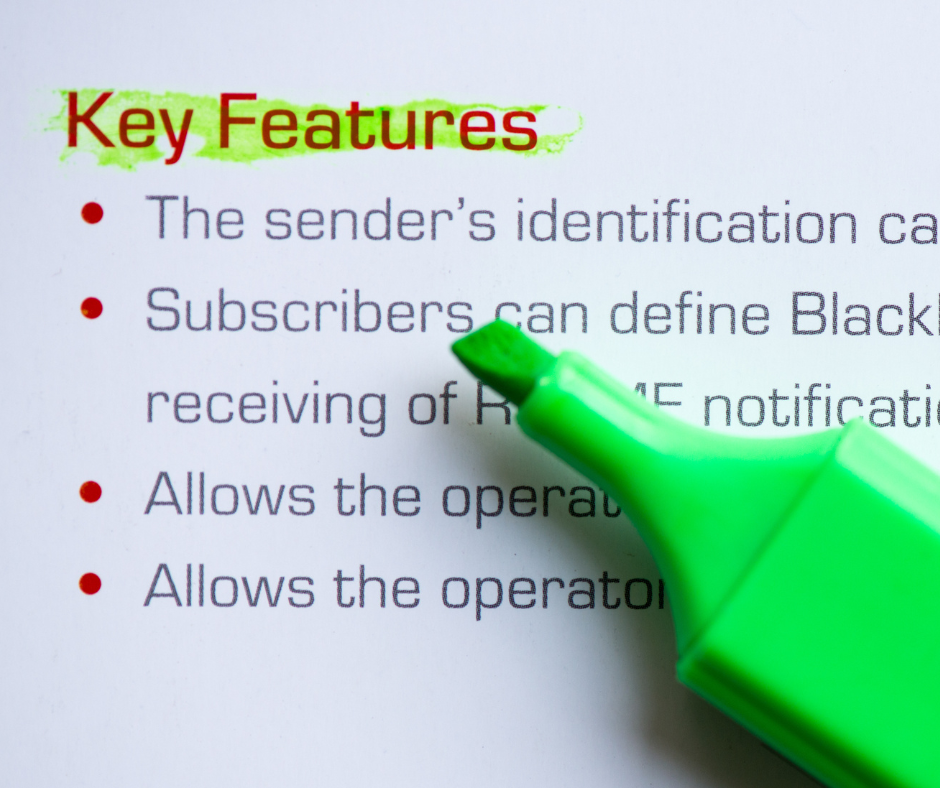Picture yourself in a crowd of potential friends or partners, each seeking a meaningful connection. Communication is your superpower in this sea of possibilities – a fluent conversation can turn strangers into lovers, and a misunderstood word can spark a heated argument. In the realm of human interactions, the importance of effective communication is undeniable.
Now, let’s transpose this image to the world of business. Imagine your startup or business as a person in a relationship with your customers. Here, communication is about presenting your value proposition – your unique ‘traits’ that make you the ideal ‘partner’ for your customers. If not articulated clearly, it can lead to customer confusion, lost potential sales, and a diluted brand image. Just as in personal relationships, misunderstanding can lead to breakups – with customers!
In this article, we’ll explore the importance of communicating your value proposition effectively and provide a step-by-step guide to help you craft a message that resonates with your customers. After all, isn’t business about building strong, healthy relationships with your customers?

Why It's Make-or-Break
Imagine pouring heart and soul (and a good deal of coffee) into a business that could change lives or industries. Your solution can significantly improve people’s lives, yet it all falls apart if your customers can’t understand your offering. They’ll exit your website faster than a rabbit being chased by a fox.
Ever been on a website where the lingo is so thick and confusing, you feel like you’ve walked into a lecture on quantum physics halfway through? You probably didn’t stick around long. That’s the power of clear articulation.
If your potential customers don’t understand what your business does and how it can solve their problems, they won’t hesitate to look elsewhere. Just like a patron walking out of a confusingly laid out store, the potential customer will exit your website and head to a competitor’s site that speaks their language.
Decoding Value Propositions
Picture being at a social event and someone asks you, “What’s unique about your business?” Your compelling, conversation-winning response is your value proposition. It’s your business’s calling card, a mix of what you offer, why you’re different, and why customers should care.
For instance, imagine if Netflix had said, “We’re an online platform for watching shows.” Okay, cool, but so what? Instead, they went for “Watch anywhere. Cancel anytime.” Boom! Instantly, you understand that they offer freedom and flexibility, making them stand out from traditional cable TV services.

Why Clear Value Propositions Are Gold
So, why sweat over a clear value proposition? Here’s the lowdown. It does three things better than a triple-shot espresso for your business.
- Firstly, it fosters trust and credibility. Customers are more likely to do business with you if they understand what you’re about. It’s like an open and honest relationship – clear communication creates trust!
- Secondly, it gives you a spotlight in the crowded market. When your unique strengths are laid bare, customers can see how you’re different (and better!) from your competitors. Think about Apple’s proposition, “Think different.” They’re not just selling computers; they’re selling an innovative mindset.
- Finally, it helps you attract the right people. When your message resonates with your ideal customer, it’s like a beacon in the night, drawing them towards your business. It ensures you don’t waste time on customers who aren’t the right fit. You want to find your tribe, those who will value what you offer and keep coming back for more.
A well-crafted value proposition can be the key difference between your startup being a home run or a strikeout. But don’t worry, I’m here to help you craft that winning message.

Deep Dive Into Crafting an Irresistible Value Proposition
The Research Phase – Understanding Your Target Audience
Customer Personas
Let’s kick things off by chatting about customer personas.
Now, if you’re thinking that customer personas sound a bit like imaginary friends for your business, you’re not too far off. These fictional characters are, indeed, detailed representations of your ideal customers, and they serve an essential purpose. By creating them, you get a clearer understanding of your audience’s challenges, preferences, and motivations.
So, don’t rush this step. Invest time in getting into the nitty-gritty details of your customers’ lives. What are their jobs? Their hobbies? Their most significant pain points? These personas will be invaluable when crafting your value proposition.
Understanding Your Customers’ Jobs to be Done
Now, onto the “Jobs to Be Done” framework.
This might sound a tad mechanical, but it’s a crucial concept to grasp. The idea is that customers ‘hire’ products or services to get a particular job done. So, when you’re selling a drill, you’re not really selling the drill. You’re selling the ability to make holes.
This shift in perspective lets you dig deeper into what your customers really want from your product or service. It’s a subtle yet powerful shift that can significantly enhance your value proposition.

Competitor Analysis
And last but not least, competitor analysis. This isn’t a game of imitation. It’s about understanding your competitors’ value propositions to carve out a unique space for your offering.
So, pull on your detective hat and get to work. What benefits do they promise? How do they position themselves? The insights gleaned from this process will be a rich source of inspiration for crafting your unique value proposition.
The Preparation Phase – Understanding Your Company’s Features and Benefits
After gathering all this valuable information, it’s time to bring your value proposition to life.
Identify The Most Prominent Pain Points
First, identify and prioritise the most significant pain points of your customer personas.
For example, think about a wealthy middle-aged woman. Let’s call her Jane. Jane has a successful career, she loves her friends, but she’s always strapped for time. So, when it comes to gift shopping, she struggles.
She values quality, but researching for the best gifts takes time – time she doesn’t have. Understanding Jane’s pain points gives you a golden opportunity to tailor your product or service to meet her needs.
List Out Your Key Features
Next, list out your product or service’s key features.
Let’s say you have a gift-curation service. You provide a personalised selection of high-quality gifts, saving Jane hours of research time.
Each feature of your service is designed to directly address one of Jane’s pain points. By aligning these elements, your service becomes the perfect answer to her problem.

Identify The Benefits of Your Product’s Features
Now, it’s time to illuminate the benefits of your key features.
Instead of stopping at the features themselves, go the extra mile. Show your customers the value these features bring.
Jane doesn’t just get a curated list of gifts. She gets hours back in her day. She gets the peace of mind that comes from knowing she’s giving her friends high-quality gifts. She gets to enjoy the experience of giving, without the stress of preparation.
Following that, connect these benefits to Jane’s pain points. Craft your message in a way that makes it crystal clear that your service is not only a good fit but the best fit for her. You’re not just selling a gift-curation service. You’re selling a stress-free, time-saving solution to her gift-giving dilemmas.
The Execution Phase – Creating Your Value Propositions
Now that you’ve identified your target audience, understood their ‘jobs to be done,’ aligned your product’s key features with their pain points, and defined the benefits, you’re ready to weave it all together into a unique value proposition. Here’s how you do it.
The Famous Templates
First off, let’s talk templates. There are some brilliant ones out there.
Take Steve Blank’s method, for instance, which says: “We help (X) do (Y) by doing (Z)”.
Or Geoff Moore’s version: “For [target customer] who [needs or wants X], our [product/service] is [category of industry] that [benefits]”.
They are simple, straightforward, and tell your customers exactly what they can expect. They’re like training wheels when you’re just starting out on this value proposition journey.
But here’s the kicker: these templates are only your starting point. Yes, they’re handy, but they might also land you in ‘me too’ territory, and that’s a place no brand wants to be.
My clients often come to me asking for something that will not just resonate but also be remembered. They’re after a value proposition that’s as unique as their fingerprints.
Be Creative
How do you craft something that bespoke, you ask? Well, there are a couple of routes you could take.
You could gather your team for a brainstorming session. While this is a great way to get everyone involved and the creative juices flowing, remember that it can be a bit like herding cats. You’ll need to keep everyone focused and on-topic.
Alternatively, you could hire a seasoned copywriter. Believe me, a pro can make all the difference. A good copywriter doesn’t just save you time. They bring an outsider’s perspective, a knack for understanding your brand, and a way with words that can make your value proposition sing.
But if you’re a do-it-yourself kind of person, don’t fret. Crafting a compelling value proposition is something you can definitely handle in-house. Here are a few tips:
- First, keep it simple. Your value proposition isn’t the place to flex your technical vocabulary. Avoid industry jargon and abbreviations. They might make you feel smart, but they risk alienating your audience.
- Second, brevity is your friend. Respect your audience’s time and attention span. The shorter and sharper, the better.
- Finally, ensure you use your brand’s tone of voice. Your value proposition isn’t just about what you say, but also how you say it. If your brand was a person, how would it speak? Be consistent with that voice throughout.
Remember, your value proposition isn’t set in stone. It’s a living, breathing thing that should evolve as your business does. The key is to keep it focused, relevant, and compelling to your audience. Do this, and you’ll be well on your way to winning more customers.
After all, people don’t just buy what you do; they buy why you do it. And your value proposition is the perfect place to tell them why.

Cherry On Top: Hinge’s Winning Value Propositions
To wrap things up, let’s talk about my all-time favourite example of killer value propositions.
Hinge’s “Designed to be deleted” campaign is an excellent case in point. It’s like a mission statement that directly addresses the pain points of their target audience. This savvy slogan tackled the concerns of its user base head-on, promising a dating app experience that was different from the norm.
The focus wasn’t on endless swiping or casual hookups; instead, Hinge emphasised genuine connections and meaningful relationships. It’s a fantastic example of a value proposition done right: clear, memorable, and perfectly aligned with the target audience’s needs and wants.
Like Hinge, your value proposition should cut through the noise and resonate with your target audience. As you move forward in crafting your own value proposition, keep these principles and examples in mind.
Remember, a great value proposition isn’t just about explaining what you do. It’s about clearly articulating why what you do matters to your customers. And when you nail that, you’re well on your way to winning more customers and growing your business.

Key Takeaways
- Communication is vital for businesses, much like in relationships. Your value proposition is your key tool in communicating effectively with your potential customers.
- Understanding your customers’ personas, their ‘jobs to be done’, and your competitors can help you carve out a unique space for your offering.
- Identifying your product’s key features, and the benefits they bring and aligning them with your customers’ pain points is central to creating an impactful value proposition.
- A successful value proposition is simple, brief, and consistent with your brand voice. It doesn’t just explain what you do but why it matters to your customers.
- A good example of a successful value proposition is Hinge’s “Designed to be deleted,” which clearly addresses its target audience’s needs and wants.
Wrapping Up
If this read has made you question your own value proposition, don’t be shy to act on it. Evaluate it based on the insights we discussed today. Is it simple, clear, and, most importantly, does it resonate with your customers?
If you’re feeling overwhelmed, remember you’re not alone. As a seasoned marketer, I’ve worked with all sorts of businesses, helping them shape their messages and attract more customers. I can provide the guidance and fresh perspective you might need. Reach out to me, and let’s give your value proposition the boost it deserves.







